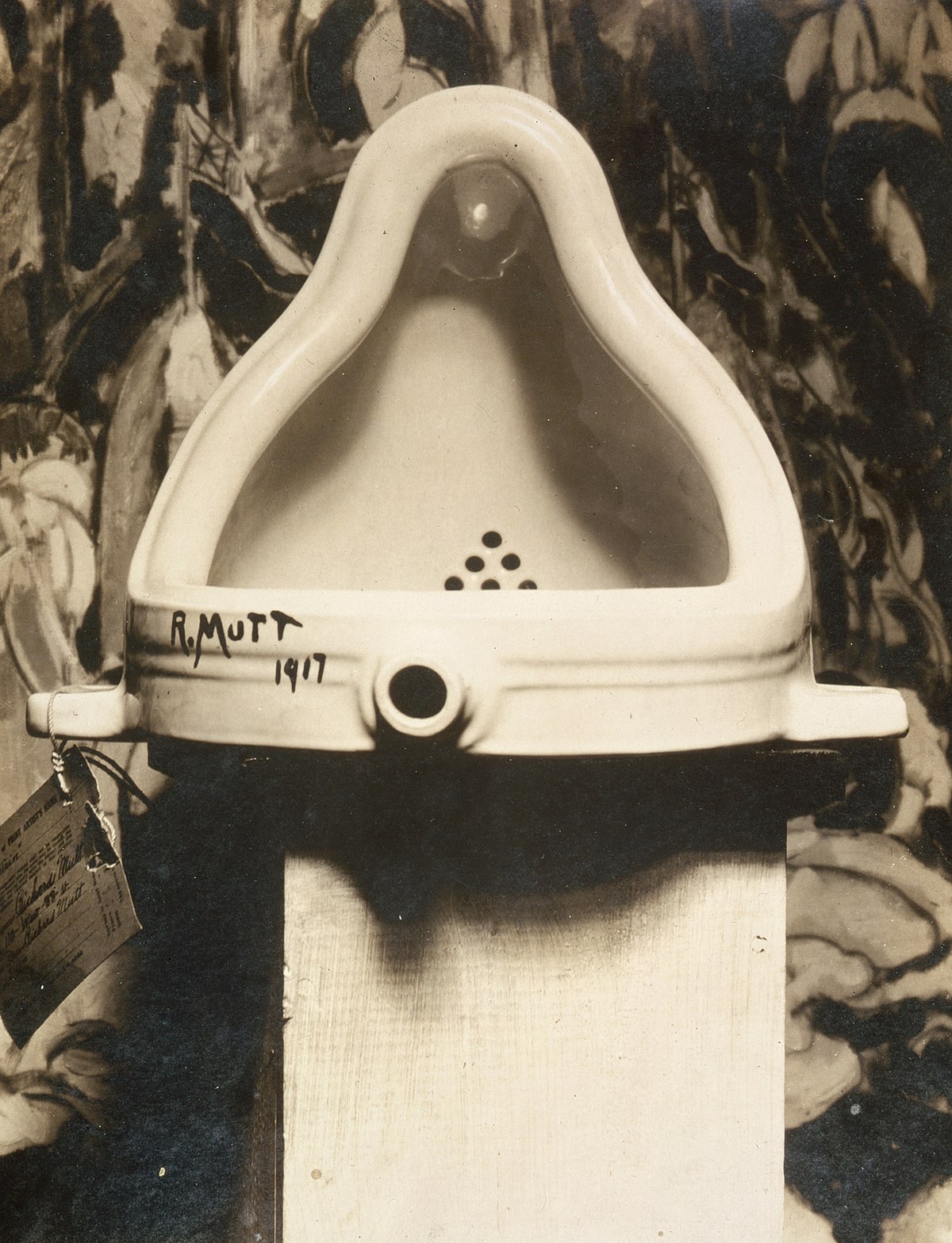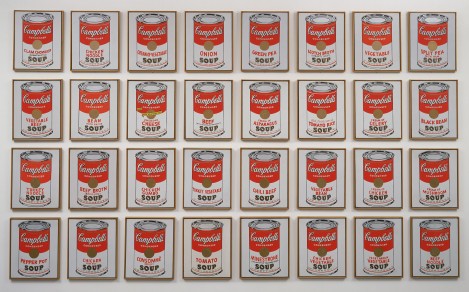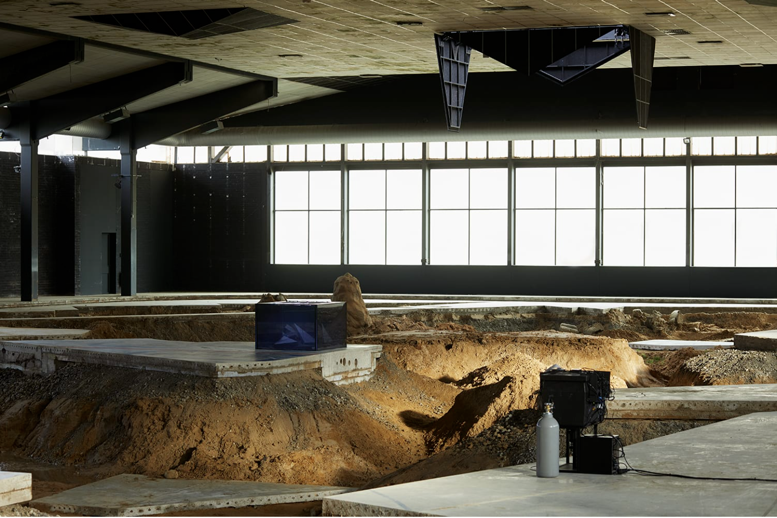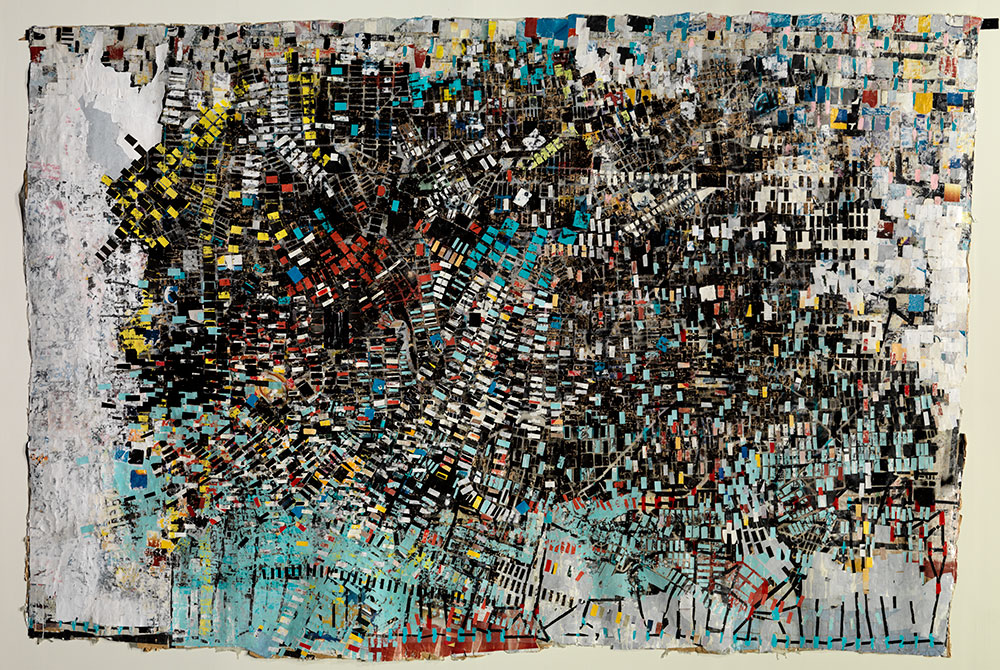Art thinking" is a hot topic in the business world these days. The idea is to apply the way of thinking that artists use to create artwork to business as well.
In this issue, we will look at the different ways of thinking about art, from well-known artists to artists whose names are rarely heard in Japan but are highly regarded worldwide, by looking at their actual works!
Marcel Duchamp

The Fountain
A work by Marcel Duchamp ( 1887 - 1968), the famous founder of "modern art. This work is renowned as a masterpiece of ready-made art.
By signing a magnetic male urinal "R. Mutt," he claimed that a ready-made product could also be called a work of art. Although it was met with a great deal of opposition at the time, today it is often regarded as a starting point for contemporary art, as a monumental work that reexamines the concept of art and the system itself. It can be said that the work of art demands a rereading of the "concept of art," that a work of art is not a work of art because it is originally a painting or because it is beautiful in the traditional sense of the word.
Art thinking as seen here is about expanding the possibilities of existing concepts by reconstructing them. However, it is inevitably accompanied by an evaluation of the work as "inferior," "dirty," or "not decent" in terms of general values. How do we respond to these evaluations, or rather, how do we make people say, "Hmmm...I see. Such games are routinely played in contemporary art, and by applying the framework of this discussion to your own field, you may be able to come up with something you have never even considered.
It should be noted that although this work has historically been attributed to Duchamp, most of Duchamp's readymade works are, according to current research, attributed to a German avant-garde and Dadaist artist/poet woman, Elsa von Freytag-Loringhoven ) is said to have created the work.
Donald Judd

Untitled
Donald Judd ( 1928-1994) is famous as a representative of the Minimalist art movement that flourished in the United States during the 20th century.
He produced a number of works called "Untitled," in which boxes regularly protrude from the walls. This work, which appears to be nothing more than a series of simple boxes, was created according to several rules. The boxes are made of alloy, the sides are painted with the lacquer paint used to paint Harley Davidsons, and the top and bottom surfaces are bare metal. 12 boxes, each 9 inches tall, are spaced 9 inches apart. And because Judd disliked any trace of handmade, the objects of the piece themselves were produced in a factory.
There is no inevitability to these rules, but through his ascetic adherence to certain rules, Judd embodied the formalism of art. Some may have found visual beauty in this, while others may have found the minimalist sensation of the above-mentioned process described in words refreshing. By stripping away almost all the ornamentation and replacing it with a minimum of objects, a new redefinition of "art/art" was created from the previous works of art that had created a certain "artistic" feel through the use of different colors and various forms.
This can be seen as an example of how negative work can actually lead to new creation.
Andy Warhol

Campbell's Soup Can
Andy Warhol, the famous pop art master, created this work between 1961 and 1962. The work, produced using a type of printmaking technique known as silkscreening, consists of 32 identical, superficially identical cans of Campbell's tomato soup (a popular commercial food product at the time) on canvas. With this approach, Warhol was making a scathing statement about American popular culture and mass consumer society of the time. He may not have necessarily wanted to criticize society. In the history of art, Warhol is often credited with raising the artistic value of printmaking and popularizing art, but perhaps his more personal motivation of "wanting to be a pop star" is more important. It is no exaggeration to say that the basis for the common understanding that "famous contemporary artists" are also fellow stars, if not rock band members or actors, originated with the explosive popularity of Warhol.
Christo & Jeanne Claude

Reichstag Packed|1995 Photograph: Reinhard Krause/Reuters
The couple is famous for their "packaging art," large-scale project art that began in 1958 with the packaging of everyday items and gradually grew to include large buildings (the Reichstag in Berlin, Germany), nature, and entire park landscapes. The idea was introduced within the framework of "Land Art". The artist is often presented within the framework of "Land Art," a term he denies. The couple, who say that their work "appears like a dream, disappears like a dream, and remains only in the audience," never leave their packed structures untouched, and their work can only be seen through photographic documentation. The huge cost of each project was covered by the sale of Christo's original artwork, including drawings and collages that anticipated the completion of the project, without any support from museums, governments, or corporations. After the couple's death, the foundation that carried on the couple's legacy realized the packaging of the Arc de Triomphe in Paris, attracting a great deal of attention.
The project has been the subject of repeated controversy, with local residents and others asking, "Is this art? Each project took several years to several decades from conception in the 1960s to realization.
Pierre Huyg

After ALife Ahead
The works of Pierre Huigues ( 1962 - ) present a worldview that resembles science fiction. But while science fiction is also science fiction, it is also conceived as speculative fiction. It is a world of intelligent life that learns, self-corrects, and evolves. By crossing various disciplines and engineering, not just art, an "environment" that no one has ever seen before is presented as art.
The artistic thinking that can be seen here is no longer confined to word games such as analyzing and redefining existing concepts. Rather, it is a work that reminds us of our world surrounded by non-human things, and the creation of these "non-human things" using a variety of contemporary research and skills.
Marina Abramovic

Rhythm 0
Marina Abramovic ( 1946- ), known for her radical performative art, presented a performance piece called "Rhythm 0" in a New York gallery in 1974. The artist herself played a completely passive role, and a desk next to her contained 72 various items with the proviso that "the viewer is free to use these tools against the artist," who for six hours acted as an objective object in the space. At first, visitors gave Abramovic roses, for example. However, dangerous tools such as scissors, knives, a gun and a single bullet were also placed, and the gradually escalating performance ended when one visitor reached the extreme point of pointing a filled gun at an unarmed artist.
In this social experiment, the artist says, "I wanted to test the extent to which human beings can be cruel in a space with no social consequences.
Her work, which has a strong social and political component within performative art, is not radical for the sake of being radical, but rather as a necessary measure to expose the essence of human nature.
Olafur Eliasson

The Weather Project
Olafur Eliasson ( 1967- ) is an artist who often creates site-specific installations. He has a great interest in natural phenomena and architectural structures, and sometimes uses machines and other objects to create spaces that evoke natural phenomena, aiming to sway the viewer's vision and perception. In this work, a huge orange light source, like a sunset, is reproduced inside the museum.
The harsh nature of his native Iceland has greatly influenced his art. While the beautiful and magnificent workings of the earth - glaciers, continental cross-sections, and cold seas - exist there, it is also an area where the effects of global warming are becoming more and more pronounced. Eliasson connects artistic thinking with society in the way that only art can raise issues through artwork that reproduces the phenomena of light and water.
Hito Steyer

Factory of the Sun|2015, Courtesy of Andrew Kreps Gallery, New York
Hito Steyer is a filmmaker and an innovator in the field of essay-documentary work. He is interested in technology, the global circulation of images, and especially the impact of images on society. Known primarily for his video works, he is an acclaimed artist who extends the boundaries of cinema and addresses important, yet conceptual, contemporary issues.
In his work, he mixes fiction and fact, computer graphics and documentary footage. Themes include militarism, the rise of surveillance societies and alternative economies, and other contemporary issues that all people can see as their own. However, it is presented with a combination of pop and humor, without ending up with a stiff and preachy piece.
Regardless of how serious the theme may be, art must have a certain lightness to it. Such lightness of perspective and intermingling of skills should be supported by critical thinking that will serve you well in other fields.
Mark Bradford

BLACK VENUS| 2005 © Mark Bradford (courtesy the artist and Hauser & Wirth) photo: Bruce White
Mark Bradford is a contemporary artist who works primarily in the abstract. He is known for his large-scale, grid-like works that combine paint and collage and are characterized by their incorporation of everyday items such as poster remnants and business cards. In his work, Bradford explores social and political issues such as the marginalization of communities and the socially vulnerable by those in power. He describes his style as "social abstraction.
How can he capture contemporary society while adhering to the traditional form of painting? This challenge is a framework for thinking that is common to contemporary businesspeople, who must develop their thinking by leveraging their own strengths and incorporating the environment around them.
Banksy

Banksy, a street artist who has become very popular in Japan in recent years, has a style of writing messages to society on city walls with striking illustrations and text. This technique, known as stenciling, involves making a mold in advance with holes in the desired shape, holding it up to the wall, and spraying it down, allowing the graffiti to be left quickly before the police find it. The reason he dares to use a method that is often categorized as illegal rather than art is that the people he wants to convey his message to and the way he wants to convey it are us, the people walking on the streets.
Even if the method is seemingly highly criticized, we can create our own "right answer" by involving the people around us. It is a kind of dangerous methodology, but there are many points we can learn from this, even if only partially.